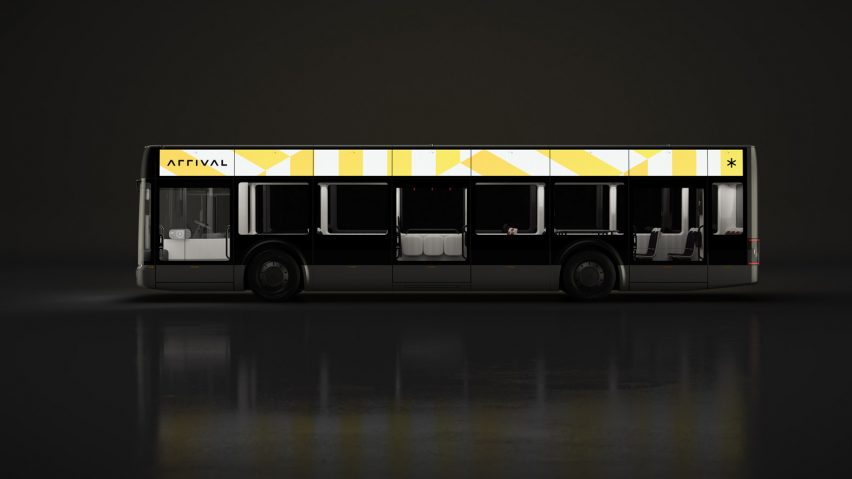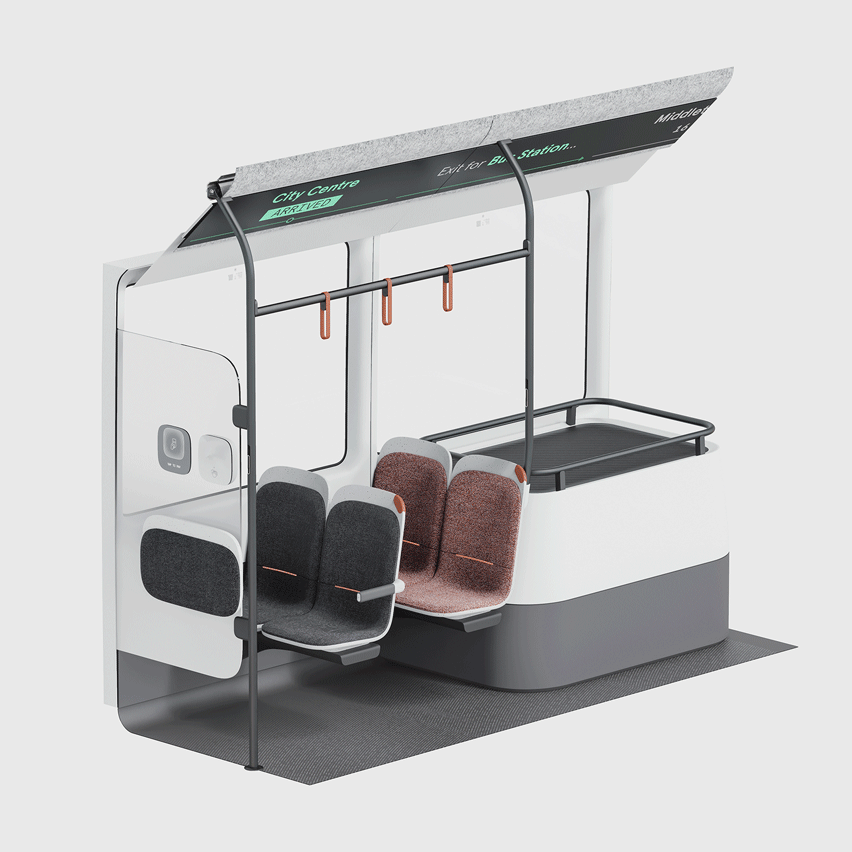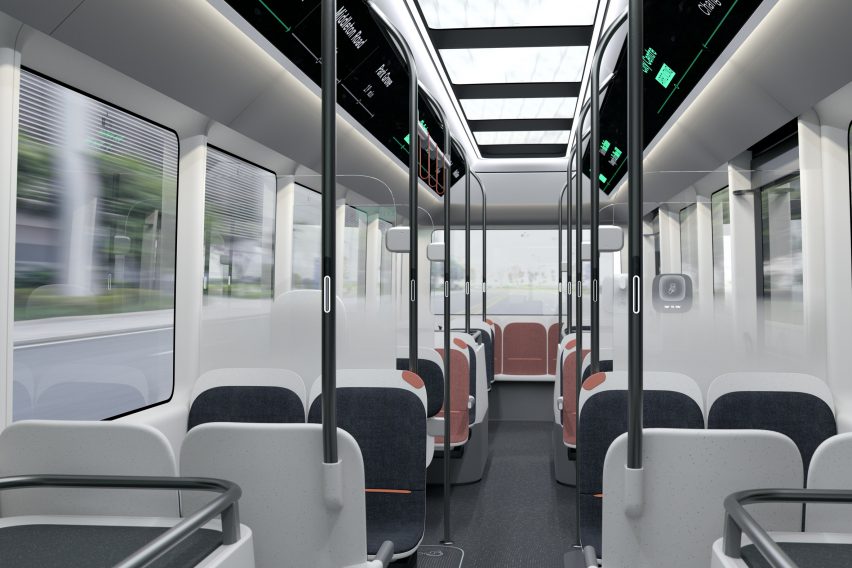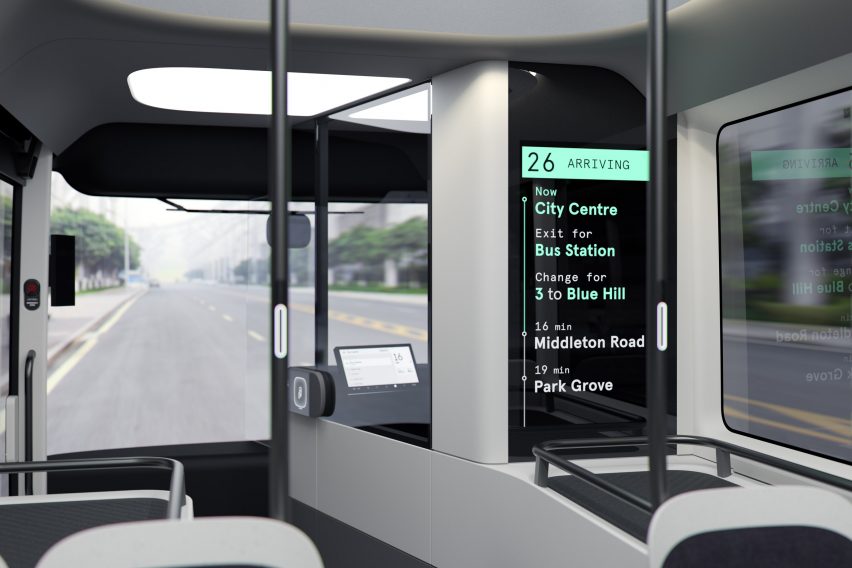
Arrival launches electric bus with features to help people travel safely following pandemic
Electric vehicle brand Arrival has launched a zero-emissions bus aimed at making public transport viable in the coronavirus era.
The bus has a number of features to ensure safe travel including a zero-touch bell and removable seats to facilitate social distancing.
Cantilever seating and smooth interior surfaces with no seams between wall and floor make the vehicle easy to clean.
"The configurable seating means that operators can change the configuration overnight at the depot to increase or decrease the number to meet demand or government directives on capacity levels, for example during times like the recent pandemic," said Arrival spokesperson Victoria Tomlinson.

The Arrival Bus features a panoramic roof and large windows to increase natural light levels. Information screens on both the inside and the outside of the bus provide information on how busy the route is and how much seating is available.
Passengers can access this information remotely and request a bus to stop via their smartphones before they leave home.
The electric vehicle, which is ready to go into production, follows the London-based brand's electric van, which was unveiled earlier this year and is one of a number of vehicles the startup intends to launch over the coming months.

The new passenger vehicle uses the same "skateboard" platform as the van, which features a linear aluminium chassis housing modular components including batteries, motor and the drivetrain.
A composite body sits on top of this. With all the mechanical parts contained in the chassis, the vehicle has more usable floor space than traditional buses.
The modular construction allows the chassis to be extended in increments of 1.5 metres, with the smallest model measuring 10.5 metres in length and the longest measuring 15 metres and having a maximum capacity of 125 passengers.

Rather than relying on traditional vehicle supply chains made up of dozens of subcontractors located in different parts of the world, Arrival is developing a series of localised "microfactories" where components are assembled to create vehicles close to where they will be needed.
The chassis and bodywork are made of lightweight components that do not require expensive tooling, leading to savings that Arrival claims allows it to sell the vehicles at a similar price to models using internal combustion engines.
"Arrival has invented a unique assembly technology to produce all the vehicles in its portfolio from microfactories, deployable worldwide to serve local communities, pay local taxes and support retention of local talent," said the brand.
"Arrival's integrated public transportation ecosystem includes buses, cars for sharing, taxis, delivery robots, charging infrastructure, microfactories and digital services, helping cities meet net-zero emissions targets," it added.
"The Arrival Bus is an important element of this ecosystem, elevating the public transportation experience and ensuring strong economic benefits that reduce the reliance on government subsidies."
The coronavirus pandemic has led to a dramatic reduction in public transport use around the world as passengers heed social-distancing rules and find alternative ways of travelling.
Many cities have seen a big increase in cycling and walking but there are also fears of a rise in congestion and pollution as people take to their cars for journeys they would have previously taken on buses, trains or underground networks.
This has led to a huge drop in revenue for public transport systems, casting doubts on their long-term viability.